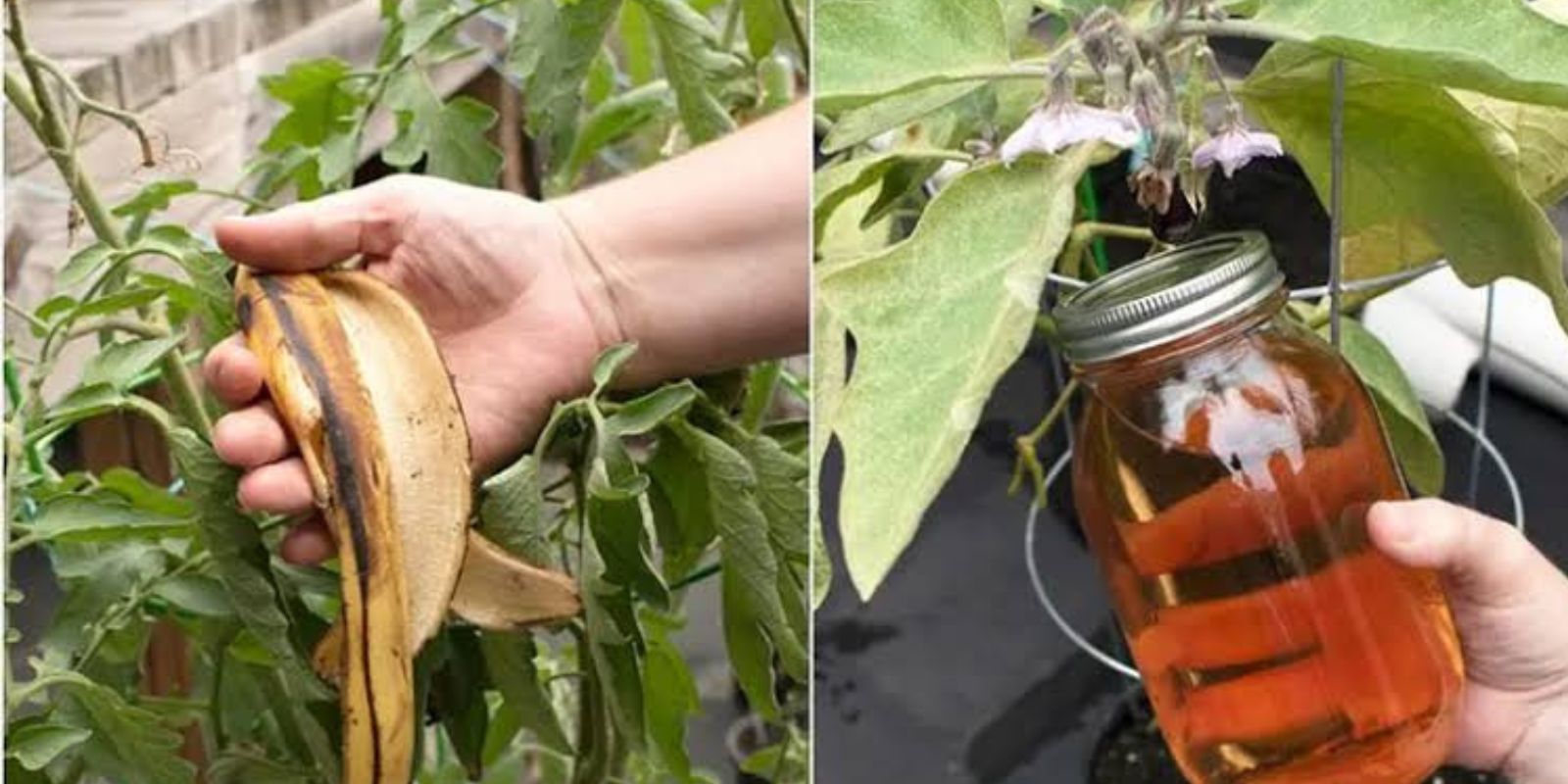Banana peels are often discarded as kitchen waste, but did you know they hold the power to transform your garden? Packed with essential nutrients like potassium, phosphorus, and calcium, banana peels can be repurposed into a natural fertilizer that not only saves you money but also nourishes your plants. This eco-friendly hack is simple, sustainable, and incredibly effective. Let’s dive into the step-by-step process of turning banana peels into liquid gold for your garden and explore why this method is a game-changer for plant lovers.
The Nutritional Power of Banana Peels
Banana peels are more than just compost material—they’re a powerhouse of nutrients that plants need to thrive:
- Potassium (K): Essential for plant growth, potassium helps strengthen roots, improve resistance to disease, and enhance fruit and flower production.
- Phosphorus (P): This nutrient promotes healthy root development and supports the energy transfer within plants, aiding photosynthesis and overall growth.
- Calcium (Ca): Calcium strengthens cell walls, leading to robust and resilient plants.
- Other Nutrients: Banana peels also contain trace amounts of nitrogen, magnesium, and sulfur, which further contribute to plant health.
By using banana peels as fertilizer, you’re offering your garden a natural, chemical-free nutrient source while reducing kitchen waste.
How to Turn Banana Peels into Liquid Fertilizer
Here’s a straightforward method to create banana peel fertilizer in just a few simple steps:
Materials You’ll Need:
- 2–3 banana peels
- 1-2 liters of water
- A clean plastic bottle (or any reusable container)
- A strainer
- Optional: Small watering can or spray bottle
Step 1: Prepare the Bottle
Choose a clean plastic bottle or container to hold your fertilizer. This will help prevent any contamination and ensure your plants receive a pure, nutrient-rich solution.
Step 2: Add Banana Peels
Cut the banana peels into small pieces to increase the surface area for nutrient extraction. Place them into the bottle.
Step 3: Fill with Water
Fill the bottle with water until the banana peels are fully submerged. Use filtered or rainwater if possible for the best results.
Step 4: Let It Sit
Seal the bottle tightly and store it in a shaded, cool place. Allow the mixture to steep for 5-7 days. Shake the bottle occasionally to release more nutrients into the water.
Step 5: Strain the Mixture
After a week, strain the liquid to separate it from the banana peel solids. This liquid is your nutrient-rich fertilizer.
Step 6: Dilute and Apply
To avoid over-fertilizing, dilute the banana peel solution with water at a ratio of 1:5 (one part fertilizer to five parts water). Pour this mixture around the base of your plants or use it as a foliar spray.
Why Banana Peel Fertilizer Works
Banana peel fertilizer is an excellent alternative to synthetic fertilizers for several reasons:
- Eco-Friendly and Sustainable: By using banana peels, you’re recycling organic waste and reducing your carbon footprint.
- Cost-Effective: This method eliminates the need to purchase expensive fertilizers.
- Gentle on Plants: Unlike chemical fertilizers, banana peel fertilizer releases nutrients gradually, ensuring plants aren’t overwhelmed.
- Safe for the Environment: Banana peels don’t contribute to soil pollution, making them perfect for organic gardening.
Tips for Success
To get the most out of your banana peel fertilizer, keep these tips in mind:
- Don’t Overdo It: Fertilize your plants every 2-3 weeks to avoid nutrient buildup in the soil.
- Combine with Compost: If you have leftover banana peel solids, add them to your compost pile for added benefits.
- Avoid Pests: If using banana peels directly in the soil, bury them well to prevent attracting fruit flies or other pests.
- Test on a Small Scale: Before applying to your entire garden, test the fertilizer on a small area to ensure compatibility with your plants.
Additional Uses for Banana Peels in Gardening
If liquid fertilizer isn’t your preferred method, here are other ways to use banana peels in your garden:
- Composting: Add banana peels to your compost bin for a nutrient-rich addition.
- Direct Application: Chop peels into small pieces and bury them near the roots of your plants for slow nutrient release.
- Pest Repellent: The smell of banana peels can deter certain pests like aphids.
- Seedling Boost: Place a piece of banana peel at the bottom of planting holes for a nutrient boost as seedlings grow.
Common Questions About Banana Peel Fertilizer
1. Can I use overripe bananas for this fertilizer?
Yes! Overripe bananas are perfect because they’re easier to extract nutrients from and reduce food waste.
2. Does banana peel fertilizer work for all plants?
Most plants will benefit from banana peel fertilizer, but it’s especially effective for flowering plants, fruiting plants, and vegetables like tomatoes, peppers, and roses.
3. Can I store the fertilizer for later use?
It’s best to use the fertilizer within a week to ensure it remains fresh and effective.
The Bigger Picture: Gardening for a Sustainable Future
By incorporating banana peel fertilizer into your gardening routine, you’re contributing to a more sustainable lifestyle. Simple actions like recycling kitchen waste and reducing dependency on synthetic chemicals can have a profound impact on the environment.
Conclusion: Transform Your Garden Today
Growing a thriving garden doesn’t have to break the bank. With nothing more than a few banana peels and some water, you can create a powerful fertilizer that enriches your soil, nourishes your plants, and helps the planet.
Ready to try this eco-friendly hack? Share your experience or tips in the comments below! 🌱
#BananaPeelFertilizer #SustainableGardening #ZeroWasteLiving #GardeningHacks #EcoFriendlyTips #GrowYourOwnFood

